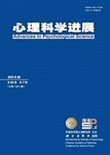|
|
A cognition-affective processing framework of psychopathy based on the TriPM model
CHENG Cheng, GUO Peiyang, YANG Li, WANG Mengya
2021, 29 (9):
1628-1646.
doi: 10.3724/SP.J.1042.2021.01628
As an important predictor of violent crime, recidivism, and juvenile delinquency, psychopathy has received extensive attention in clinical psychology and justice research. Recent studies have conceptualized psychopathy as multidimensional constructs, proposed to further understand various phenotypic constructs of psychopathy through the interaction of distinct psychopathic dispositions. The Triarchic Model of Psychopathy (TriPM) conceptualizing psychopathy as three phenotypic structures (boldness, meanness, and disinhibition) with independent etiologic pathways, provides a framework for integrating the previous findings of the assessment, development trajectory, and neurobiological process of psychopathy.
At first, the TriPM boldness includes the characteristics of stress immunity, low fear, and insensitivity to punishment. It is an adaptive expression of fearlessness genotype, which corresponds to the neurobiological dimension of low threat sensitivity. Previous studies have shown that psychopathic individuals with high affective-interpersonal (Factor 1) or boldness features are expected to exhibit reduced aversive startle potentiation, difficulty in establishing threat-related conditioning, abnormal amygdala volume, and lower levels of amygdala activation in threat context. These findings reflect the core defensive system of psychopathy—based in the amygdala and affiliated structures—is insensitive to threat or punishment cues.
Second, individuals with high levels of trait disinhibition are characterized by lack of planning and foresight, poor regulation of emotion and impulse, insistence on immediate gratification, and lack of behavioral restraint. They showed reduced P3 and ERN amplitudes in go/no-go tasks and flanker tasks, fail to process and attend to contextual or environmental cues when engaged in a dominant response set (e.g., goal-directed behavior). Give the evidence that individuals with high disinhibition tend to exhibit poor performance in various cognitive tasks, it can be speculated that the impairment of executive function, in particular the impaired ability of attentional modulation, is closely associated with psychopathic disinhibition. Moreover, the motivational system (i.e., reward-seeking) may exacerbate the deficits of executive function in individuals with high disinhibition disposition.
Finally, as the maladaptive expression of the fearless genotype, meanness describes a constellation of various phenotypic attributes including arrogance, rebelliousness, lack of intimacy, excitement seeking, and empowerment through cruelty. On the one hand, impaired emotional processes will lead to an empathic deficit, which may contribute to the development of psychopathic meanness. Extensive research has shown that abnormalities in physiological structures such as the insula and anterior cingulate cortex in psychopathy are associated with reduced subjective emotional experience and poor ability to recognize other's distress cues. On the other hand, insecure attachment associated with empathic deficit may be an important environmental factor that exacerbates individual meanness disposition.
By integrating the low threat sensitivity, impaired executive function, and empathic deficit of psychopathy with the boldness, disinhibition, and meanness of the TriPM model, the current study establishes a relatively complete cognition-affective processing framework of psychopathy, provides some useful information for theoretical research and clinical treatment about this personality disorder. However, this framework can not account for all the clinical conditions of psychopathy, as the factors that influence the phenotype of psychopathy are diverse. For example, previous research has demonstrated that gender, race, age, sample type, and psychopathic measures are all important moderators in the study of psychopathy. There are also controversies about the conceptualization of psychopathic variants or subtypes. In addition, the exclusivity of psychopathic phenotypes and their underlying neurobiological processes is still unclear.
Therefore, future research should consider the influence of these moderators on the explanation of the results. And greater attention should be paid to the underlying etiological pathways among different psychopathic constructs, it is also a verification of the discriminative validity among three dimensions of the TriPM model. Moreover, further exploration of the precursors of adult psychopathic traits will provide important information about the development of psychopathic deviant behavior, which does great help for the early treatment and intervention of this disorder.
Related Articles |
Metrics
|




